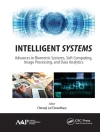The 3
rd edition of this highly successful text builds on the achievement of the first two editions to provide comprehensive coverage of IMS. It continues to explore the concepts, architecture, protocols and functionalities of IMS while providing a wealth of new and updated information. It is written in a manner that allows readers to choose the level of knowledge and understanding they need to gain about the IMS.
With 35% new material, The IMS, IP Multimedia Concepts and Services, 3rd Edition has been completely revised to include updated chapters as well as totally new chapters on IMS multimedia telephony and IMS voice call continuity. Additional new material includes IMS transit, IMS local numbering, emergency sessions, identification of communication services in IMS, new authentication model for fixed access, NAT traversal and globally routable user agents URI. Detailed descriptions of protocol behaviour are provided on a level that can be used for implementation and testing.
Key features of the 3rd edition:
- Two new chapters on IMS multimedia telephony service and IMS Voice Call Continuity
- Updated information on Third Generation Partnership Project (3GPP) Release 7 level, including architecture, reference points and concepts
- Substantially extended coverage on IMS detailed procedures
- Completely rewritten and extended chapters on IMS services
Daftar Isi
Foreword.
Preface.
Acknowledgements.
List of Figures.
List of Tables.
PART I IMS ARCHITECTURE AND CONCEPTS.
1 Introduction.
1.1 What is the Internet Protocol Multimedia Subsystem (IMS)?
1.2 Fixed and Mobile Convergence.
1.3 Example of IMS Services.
1.4 Where did it come from?
1.5 Why a SIP Solution Based on 3GPP Standards?
2 IP Multimedia Subsystem Architecture.
2.1 Architectural Requirements.
2.2 Description of IMS-related Entities and Functionalities.
2.3 IMS Reference Points.
3 IMS Concepts.
3.1 Overview.
3.2 Registration.
3.3 Mechanism to Register Multiple User Identities at a Go.
3.4 Session Initiation.
3.5 Identification.
3.6 IP Multimedia Services Identity Module (ISIM).
3.7 Sharing a Single User Identity between Multiple Devices.
3.8 Discovering the IMS Entry Point.
3.9 S-CSCF Assignment.
3.10 Mechanism for Controlling Bearer Traffic.
3.11 Charging.
3.12 User Profile.
3.13 Service Provision.
3.14 Connectivity between Traditional CS Users and IMS Users.
3.15 IMS Transit.
3.16 Support for Local Dialling Plans.
3.17 IMS Emergency Sessions.
3.18 SIP Compression.
3.19 Combination of CS and IMS Services – Combinational Services.
3.20 Voice Call Continuity.
3.21 Security Services in the IMS.
3.22 Interworking between IPv4 and IPv6 in the IMS.
PART II IMS SERVICES.
4 Presence.
4.1 Who will use the Presence Service?
4.2 Presence-Enhanced Services.
4.3 Presence Contributing to Business.
4.4 What is Presence?
4.5 Presence Service in IMS.
4.6 Publishing Presence.
4.7 Subscribing Presence.
4.8 Watcher Information.
4.9 Setting Presence Authorization.
5 Group Management.
5.1 Group Management’s Contribution to Business.
5.2 What is Group Management?
5.3 What is XML Configuration Access Protocol?
5.4 What is Common Policy?
5.5 Resource List.
5.6 XCAP Usage for Resource Lists.
5.7 Open Mobile Alliance Solution for Group Management.
5.8 Multimedia Telephony and Service Management.
6 Push to Talk Over Cellular.
6.1 Po C Architecture.
6.2 Po C Features.
6.3 User Plane.
6.4 Po C Service Settings.
7 Messaging.
7.1 Overview of IMS Messaging.
7.2 Immediate Messaging.
7.3 Session-Based Messaging.
7.4 Messaging Interworking.
7.5 Instant Messaging by Open Mobile Alliance.
8 Conferencing.
8.1 IMS Conferencing Architecture and Principles.
8.2 IMS Conferencing Procedures.
9 Multimedia Telephony.
9.1 Introduction.
9.2 Multimedia Telephony Communication.
9.3 Supplementary Services.
PART III DETAILED PROCEDURES.
10 Introduction to Detailed Procedures.
10.1 The Example Scenario.
10.2 Base Standards.
11 An Example of IMS Registration.
11.1 Overview.
11.2 Initial Parameters and IMS Management Object.
11.3 Signalling PDP Context Establishment.
11.4 P-CSCF Discovery.
11.5 SIP Registration and Registration Routing Aspects.
11.6 Authentication.
11.7 Access Security – IPsec SAs.
11.8 SIP Security Mechanism Agreement.
11.9 IMS Communication Service Identification and other Callee Capabilities.
11.10 Compression Negotiation.
11.11 Access and Location Information.
11.12 Charging-Related Information During Registration.
11.13 User Identities.
11.14 Re-Registration and Re-Authentication.
11.15 De-Registration.
11.16 GPRS-IMS-Bundled Authentication (GIBA).
12 An Example IMS Multimedia Telephony Session.
12.1 Overview.
12.2 Caller and Callee Identities.
12.3 Routing.
12.4 Compression Negotiation.
12.5 Media Negotiation.
12.6 Resource Reservation.
12.7 Charging-Related Procedures During Session Establishment for Sessions.
12.8 Release of a Session.
12.9 Alternative IMS Session Establishment Procedures.
12.10 Routing of GRUUs.
12.11 Routing of PSIs.
12.12 A Short Introduction to GPRS.
13 An example IMS Voice Call Continuity Procedures.
13.1 Overview.
13.2 Configuring the Clients with Communication Continuity Configuration Parameters.
13.3 Setting up the Initial Call and Call Anchoring.
13.4 Domain Transfer: CS to IMS.
13.5 Theresa adds Video to the Call.
13.6 Domain Transfer: IMS to CS.
13.7 Related Standards.
References.
List of Abbreviations.
Index.
Tentang Penulis
Miikka Poikselkä works for Nokia Siemens Networks, Finland.
Georg Mayer works for Nokia Mobile Phones, Finland.
All the authors are involved with Third Generation Partnership Project Agreement (3GPP), Internet Engineering Task Force (IETF) and Open Mobile Alliance (OMA) standardization.












